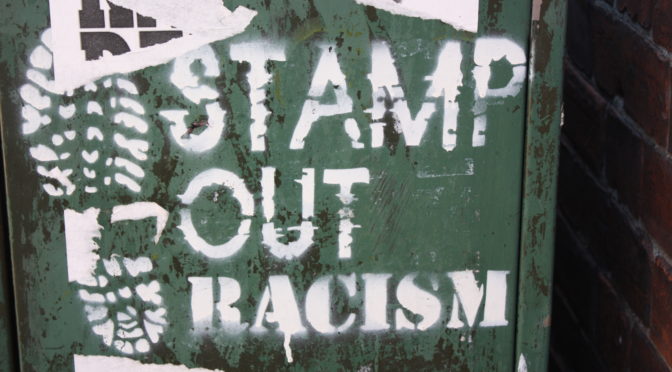In this episode of About Men Radio, Pedro and I discuss the thorny intractable issue of racism and how we’ve experienced it.
It’s a white dude (me) and a Puerto Rican (Pedro), who both grew up in the Bronx, talking about a topic that in many ways is the third rail of polite conversation.
I came of age in New York City when our neighborhood in the Bronx was in the bull’s eye of white flight.
I can recall the housing complex where we lived, Parkchester, being derisively called “Darkchester” by those who viewed newcomers with suspicion and hostility.
My young adulthood in New York City was punctuated with headline-grabbing incidents with race at the center stage:
The so-called Subway Vigilante, Bernie Goetz, shooting three black youths who accosted him and even more notably, the death of a black youth who was being chased by white teenagers in Howard Beach, Brooklyn.
He ran into the street and was struck by a car and killed.
When I was in my early teens, I delivered supermarket flyers to mailboxes in various neighborhoods. Our crew leader would load up our big canvas bags, drop us off and collect us as at a designated time and place.
One time, a classmate and co-worker, Paul Richards, and I were working a section of the Bronx called Edgewater.
It was a mostly working poor housing in bungalows converted to year-round housing. It had a reputation for being insular.
I don’t recall all the particulars, but I do remember Paul, who is black, and I being chased by a gang of white kids. As I remember it, they were shouting “nigger” at him and screaming at me for being a “nigger lover.”
We ran for our lives.
We made good our escape and vowed never to serve that neighborhood again.
The whole confrontation left me scared and angry.
Thankfully, I was raised color blind.
My dad was the first in our building to welcome the first black family to move into our high-rise. In fact, my mother was a babysitter for the family’s two sons, who were playmates for me growing up.
I recall how my family and I once visited the Bowery and I recounted the visit to my fourth-grade teacher, Ms. Wallace. I relayed how I had seen a black man panhandling from drivers at an intersection.
“Now, tell me the story again,” she said, “but this time don’t tell me what color he was.”
I was 10 years old.
Then, and today, it serves as a valuable lasting lesson to look beyond a person’s race and see them instead as a human being.

